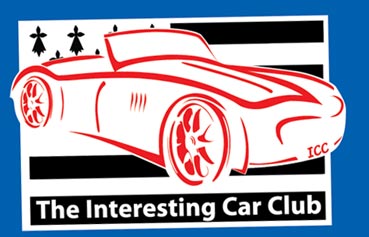Ouest-France - 09 02 2023
Do old cars have a future?
Do old cars have a future?
Old vehicles. For the owners of classic vehicles, which are ever more numerous in France, the future looked problematic. But answers are emerging.
With some 125,000 visitors - and a record day in terms of attendance on Saturday - the 47th Retromobile show, which took place over five days last week in Paris, was a resounding success. You should also see the fervor that surrounds the largest gatherings, like Le Mans Classic which, in July, for its 11th Edition, should attract more than 200,000 spectators and 8,500 collector vehicles. Faced with the passion that drives enthusiasts, we can see how much old vehicles always make people dream.
Yes, but with the new regulations - starting with the end of combustion engines scheduled for 2035 and the development of low-emission zones (ZFE) in which, from 2025, only vehicles with green Crit'Air stickers will be able to circulate, 1 or 2 - will old cars still be able to drive for a long time? Because, even if these represent only 2.5% of the French car fleet, the question of their future worries the small world of enthusiasts.
A specific thumbnail
“We must realize that the distances traveled annually are low, explains Patrick Rollet, former president of the International Federation of Old Vehicles (Fiva): 1071 km for a car, 617 for a motorcycle. And that 20%, in restoration or maintenance, do no kilometers per year. “As for accidentology, it is also particularly low: 3% of owners having an accident per year akin tominor damage for mechanics.
So that the passion survives and that these vehicles continue to circulate even in the ZFE, a specific vignette is being created with the public authorities. It would be issued to cars over thirty years old with a collector's registration document submitted on file to a vehicle in historic condition deemed to be correct and not in daily use. In the longer term, the question of fuel supply will also arise. Tests are currently being carried out with developments of e-fuel (synthetic fuels), which will inevitably prove to be more expensive than those available today.
In addition, these vehicles represent an economic weight estimated at 4 billion euros per year (source: Fiva) and would support 20,000 people. Tourist excursions, gatherings, historic rallies, museums, sharing of passion and skills, obviously we must not dismiss the weight of heritage.
“A cultural partnership has been established in this sense between Unesco and Fiva, explains Patrick Rollet. The image of older vehicles is also very good. In our studies, only 2 to 5% of respondents appear to be “antis”. »
And don't think it's a passion of the well-to-do - vision blurred by auctions that break record after record for exceptional machines -, because the average value of existing vehicles in France is €21,680.
“In 1898, concludes Patrick Rollet, an international symposium was held in New York on the nuisances linked to manure. More than 100,000 horses crisscrossed the streets daily and, knowing that an animal produces eleven kilos a day, manure was a health scourge, as in all cities of the world. From this meeting came no satisfactory answer. Today, in the State of New York still live as many horses. But they are recreational. This is how old vehicles should be considered. [...] Yes, they have a future. A future that is not urban, a future of leisure and pleasure. »
Philippe JOUBIN.



